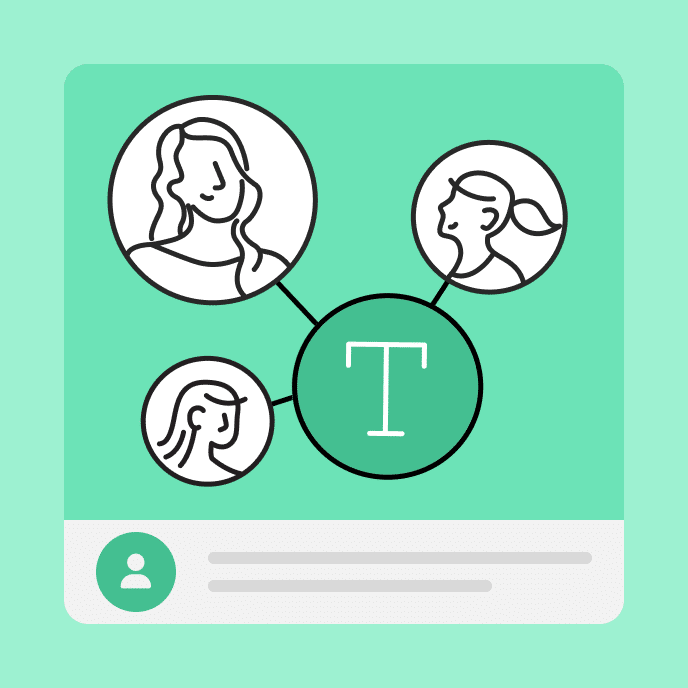The ADDIE Model: 5 Steps to Effective Workplace Training
Explore the five phases of the ADDIE Model, and learn how to apply them for an adaptable, iterative approach to creating relevant workplace training.

The ADDIE model: A tried and true standard in instructional design
In 1975, the best selling car in the U.S. was the Oldsmobile Cutlass, available in a family-friendly 4-door sedan and a sleeker 2-door coupe. Power windows? Standard. Front disc brakes? Standard. A stylish ride that’ll turn heads? Standard—albeit subjectively. For what it’s worth, I like it best in forest green.
That same year, Florida State University introduced another standard: a structured, iterative instructional design framework called the ADDIE model. Originally developed for military training, the ADDIE model quickly became widely embraced for structured course creation. And while the Cutlass’s reign ended as the 1980s began, the ADDIE model endured.
Fifty years later, the ADDIE model’s design remains valuable to L&D departments—despite the demand for faster course production today. The model’s flexibility and durability through the decades have made it readily adaptable to e-learning, mobile learning, and the push to adopt AI systems into the instructional design process.
In this post, we’ll walk you through the various stages of the ADDIE model, highlight real-world workplace training examples, and discuss how to adapt the model to modern standards.
Key Takeaways
- The ADDIE model—analysis, design, development, implementation, and evaluation—has been widely embraced for structured course creation since the 1970s.
- The various stages of the ADDIE model ensure an effective learning experience that aligns key stakeholders early, defines goals and objectives, and uses learner feedback to continually improve courses.
- While the ADDIE model is presented in a rigid, linear fashion, it can be easily adapted to modern day instructional design, adaptable to e-learning, mobile learning, and AI-powered learning.
Step 1: Analysis: Identifying needs and goals
Research the learning context and audience
As with all workplace learning initiatives, it’s essential to start by understanding your audience and what they need to learn. Conduct a training needs analysis to compare how current employee knowledge compares to desired knowledge, what your learner’s needs and preferences are, and to make sure training is actually the best solution.
You can build training “personas” based on the general knowledge, experience, and characteristics of your target audience to help boost engagement for every role. These tasks will build the foundation for the rest of the process—what needs to be learned, who needs to learn it, and how will they learn it best?
Define goals, constraints, learning environment
Whether leadership is calling for a more inclusive workplace environment or increased operational efficiency in the customer service department, set training goals that match. This helps set the stage for the design process and will guide you toward more specific learning objectives.
Additionally, take into consideration any constraints—time, budget, and the learning environment—to help you map out the resources required to get the job done. Regardless of where the training takes place—in-person, fully online, or in a blended learning environment—always include accessibility features for your learners with visual, auditory, physical, and mental disabilities.
Use data to align training with objectives and performance metrics
If the needs analysis data shows that customer service reps aren’t meeting expectations for average handle time, focus on bolstering soft skills like decision-making and problem-solving. Similarly, if analysis reveals a technical skill gap, gear training towards that skill to boost operational efficiency. Using data to align training with objectives and performance metrics ensures content is relevant, practical, and engaging for your learners.
Step 2: Design: Structuring the learning blueprint
Define learning objectives, assessments, content structure
Basic learning objectives should be rewritten into SMART goals, which stands for specific, measurable, achievable, relevant, and time-bound. Here are a few examples:
- By the end of Q3, all sales reps will be able to explain how to increase customer satisfaction scores using soft skills.
- Within three training sessions, customer service reps will decrease average handle time by 15%.
- Within three months of completing onboarding training, 85% of new hires will reach full productivity, as measured by key performance indicators.
Once learning objectives are set, consider the content structure and assessment style you’ll develop. Do these training goals require a full e-learning course with several sections, or will a quick-hitting microlearning module do? Will you require a 100% passing rate on assessments or is a lower achievement level acceptable?
Storyboarding and prototype design artifacts
Like the blueprints of a house, e-learning storyboards function as the detailed outline for an online course, including proposed visuals, text, narration, interactions, and navigation. While storyboards and prototypes won’t include every single detail—save that for the development phase—they will give all key stakeholders a clarified understanding of what the proposed course will look like and what it aims to accomplish.
Collaborative input from SMEs and stakeholders
Before you begin creating the course content, it’s important to brief, update, and solicit collaborative input from subject matter experts (SMEs) and any other key stakeholders. Doing so during the design phase reduces the chances of having to make costly adjustments and edits later in the process.
Step 3: Development: Creating learning assets
Build content, visuals, interactive modules
Now for the fun part! This is where you turn design into content. Write scripts for on-screen text and narration, gather visuals, record videos, build assessments, and create engaging interactions. Most instructional designers turn to robust course authoring tools that offer customizable course templates with interactive features for every learner.
Create a drag-and-drop assessment to help learners distinguish between workplace safety do’s and don’ts. Build a set of digital flashcards for your sales team to learn product features and competitor pricing. Set up branching scenarios for your customer service team to practice difficult customer conversations.
Whatever your learning objectives are, make sure you dedicate enough time to make content engaging. Lean into interactivity, and don’t be afraid to try something new!
Pilot testing and QA for usability and flow
Make time during the development phase to test the course. Called pilot testing, this involves having a sample audience move through the content and provide feedback on usability, relevancy, and flow. Quality assurance before implementation—even with a small sample group—can help catch most large and small issues, from confusing learner navigation to pesky spelling errors.
Iterative refinements based on feedback
Once you’ve received feedback from the pilot test group, make any necessary refinements. Now would be a good time to take a look back at those learning objectives and SMART goals to see if the content still aligns with them. Use web-based tools like Survey Monkey to gather feedback or use a course authoring tool that enables both internal and external collaborators to give real-time feedback while reviewing content.
Step 4: Implementation: Launching the training
Preparing facilitators and learners (LMS setup, enrollment)
At this point—either near the end of the development phase or just before implementation—it’s best to communicate to your target audience the importance of the upcoming learning initiative. Launch a teaser campaign via email or host a quick kickoff webinar with course info, step-by-step instructions for course access, and learning objectives.
Enroll learners or have them self-register within your chosen learning management system (LMS). Create clear channels between IT help desks, team leaders, and all other key stakeholders to build support and reinforce deadlines.If there is a blended learning element—both in-person and online learning—the in-person facilitators should be prepped and ready to deliver content at this time, too.
Pilot rollout and monitoring for early issues
While pilot testing may have already occurred at the end of the development phase, it’s beneficial to do so again during the implementation phase, just before full-scale deployment. Now that the course has been uploaded to the LMS, pilot testers can experience the full learning pathway, and communicate any issues they encounter.
Full-scale deployment through chosen delivery channels
Now it’s time to share your course. Whether it’s a full-fledged online course best taken on a laptop or a microlearning module best suited for mobile learning, delivery schedules, tracking, and reporting should all be set up. Most LMSs are capable of tracking learner, group, and content activity to measure engagement, efficiency, and performance.
Step 5: Evaluation: Measuring effectiveness and iterating
Formative vs. summative evaluation use cases
Learning initiatives hardly ever involve a single course or a single assignment. A comprehensive learning initiative may involve a few full-length courses with smaller microlearning modules in between, all over a course of weeks or months. Just like an academic curriculum, there are formative assessments (ongoing practice) and summative assessments (final evaluations).
The key to effective evaluation? Don’t wait for the final evaluations to make adjustments. Formative assessments are perfect snapshots in time of exactly what your learners have absorbed, and what they need additional help with going forward.
Incorporate learner feedback for continuous improvement
Learner feedback, whether it’s gathered through immediate post-training surveys, interviews, or on-the-job behavioral observation weeks or months later, should be used to continually improve each learning module. Explore the following questions:
- What went well?
- What was confusing for learners?
- Was the knowledge gained relevant to daily workflow?
- Where and how did learners apply their newly-gained knowledge?
- Were learning objectives met?
This is also a great time to motivate your learners with additional courses and activities to encourage continuous learning. Point them toward supplemental material, and start getting them excited for the next round of learning.
Plan next iteration—refine based on evaluation data
While evaluation is technically step five in a five-step process, it should realistically be ongoing throughout each phase. Think of it like this: the first time you research, build, and deliver a course from scratch, you’re using the ADDIE model in a linear fashion—from step one to step five. But you’ll hardly ever distribute a course just once, not to mention within the same context and to the same exact learners.
What does this mean for you? As soon as all learners complete a particular course, you start planning for the next iteration of it. Use the data you’ve collected to jump back to the analysis phase, incorporate new designs, develop new modules, and so on. From this point on, the ADDIE model is no longer strictly linear. Rather than rigidly following the process step-by-step, adapt it to suit your needs.
Enhancing ADDIE for 2025: Adaptations and innovations
AI-powered content and personalization
The mass rollout of AI tools to every corner of the corporate environment doesn’t stop at instructional design. AI can accelerate and enhance each step of the ADDIE method. Real-time AI data analysis leads to more personalized learning experiences. Powerful AI assistants can help design and build courses 9x faster. Chatbots can offer real-time support and feedback, and LMSs with embedded AI can provide adaptive learning experiences that shift depending on learner performance.
Mobile and microlearning integrations with ADDIE
Specific needs and preferences of the modern employee demand a more agile learning experience. With more and more jobs moving to remote and hybrid environments, on-the-go and just-in-time learning are the norm. While the ADDIE model appears rigidly structured, it can be adapted to any learning environment, including mobile learning and microlearning.
To adapt the ADDIE model to mobile and microlearning, consider the following advice:
- Analysis. Be aware of what devices your learners are using to complete training and how they are using them.
- Design & Development. Maintain your focus toward interactivity and engagement, but use shorter videos, less text, quicker interactions, and smaller assessments.
- Implementation. Use push notifications and try using gamification elements like leaderboards, badges, and rewards. These are more effective on a mobile device than a stationary desktop or laptop that employees aren’t always around.
- Evaluation. Gather feedback on the learner experience through mobile surveys, embedded data & performance tracking, and ongoing pilot testing to measure the agility and adaptability of your courses on any device.
Applying ADDIE in e-learning and MOOC environments
While the ADDIE model is considered one of the most traditional instructional design methods, its application to modern learning environments is clear. Whether it’s an e-learning module distributed to a geographically dispersed team of 25 sales reps or a massively open online course (MOOC) open and free to anyone with internet access, there’s still a need to understand one’s audience, develop engaging content, and evaluate outcomes to improve the learning experience.
The ADDIE model has worked for generations, and with the clever ingenuity of modern day instructional designers, it will continue to work for generations more.
An enduring instructional method, ready for the future of learning
The ADDIE model’s enduring value as a structured, iterative framework for instructional design has survived rapidly changing modern learning environments. Its adaptability to agile learning and integration with powerful tools like AI has only enhanced its effectiveness for workplace training in 2025.
Eager to see just how effective your course authoring methods are? Explore different KPIs to help you evaluate training success, and start your free trial of the Articulate 360 platform today to seamlessly create, collaborate, distribute, and track the entire learning experience.
You may also like

What Is Blended Learning? A Comprehensive Guide
Learn what blended learning is, how it combines in-person and online content to provide a flexible approach to learning, and real-world examples to follow.

